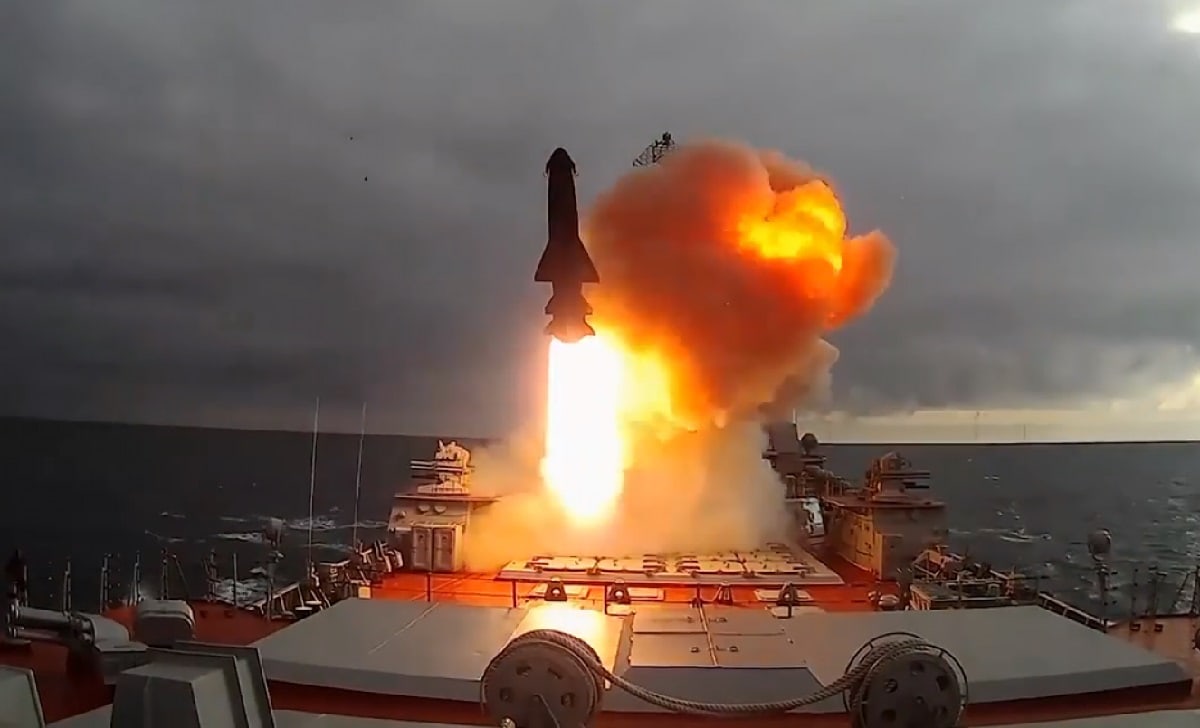The Russian Navy has already conducted multiple successful test launches of its 3M22 Tsirkon hypersonic missile from a Project 22350 frigate, but next month the Northern Fleet will attempt the first test launch of the high-speed missile from a nuclear-powered submarine.
The Tsirkon has a range of about 1,500 km to strike ground targets and slightly less distance against naval targets; and Moscow has set a goal for the missile to be accepted for service in 2023.
At the recently concluded MAKS-2021 international air show, which was held outside of Moscow, a source in the domestic defense industry told Tass that the submarine test-launches of the still-in-development missile platform could take place next month.
“The first test-launch of the Tsirkon missile from the Severodvinsk nuclear-powered submarine as part of the flight development test may take place in August,” the source told the Russian news agency on Sunday.
The Reutov Research and Production Association of Machine-Building, which developed and is producing Tsirkon hypersonic missiles, has so far declined to comment on when the first submarine-launched test will take place.
The Severodvinsk is the Project 885 (Yasen) lead and sole underwater cruiser. She was delivered to the Russian Navy on June 17, 2014.
Practice Makes Perfect
Russia has continued to conduct test launches of the Tsirkon – also known as the Zircon – with the most recent test occurring just last week. According to a report from Reuters, the Russian Ministry of Defense said in a statement that the missile had been fired from the Project 22350 lead frigate Admiral Gorshkov in the White Sea, and traveled approximately seven times the speed of sound before it hit a ground target on the coastline of the Barents Sea more than 350 km (217 miles) away.
“The tactical and technical characteristics of the Tsirkon missile were confirmed during the tests,” the ministry said.
Russian Federation President Vladimir Putin has repeatedly touted the Tsirkon as part of a new generation of missile platforms that remain unequaled in the world. The Russian leader, who had first announced the hypersonic weapons in a 2018 speech, has said they could hit almost any point in the world and could evade a U.S.-built missile shield.
In May, Russia’s Deputy Minister of Defense Alexey Krivoruchko announced that the state trials of the missile platform on the frigates could be concluded this year.
“These positive results make it possible to begin the next trial stage: firing from submarine carriers,” Deputy Minister Krivoruchko told Tass. “The state trials are expected to end in 2021, and serial shipment should begin in 2022.”
Moscow has already announced that it intends to outfit its submarines and surface ships with Tsirkon hypersonic missile systems, and while it may not make the 2023 planned deadline, it does seem likely the high-speed missiles will be a key component of Russia’s increasingly powerful naval arsenal.
Peter Suciu is a Michigan-based writer who has contributed to more than four dozen magazines, newspapers and websites. He regularly writes about military small arms, and is the author of several books on military headgear including A Gallery of Military Headdress, which is available on Amazon.com.

